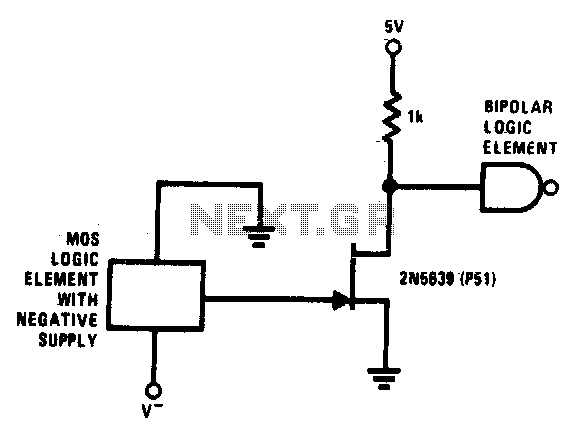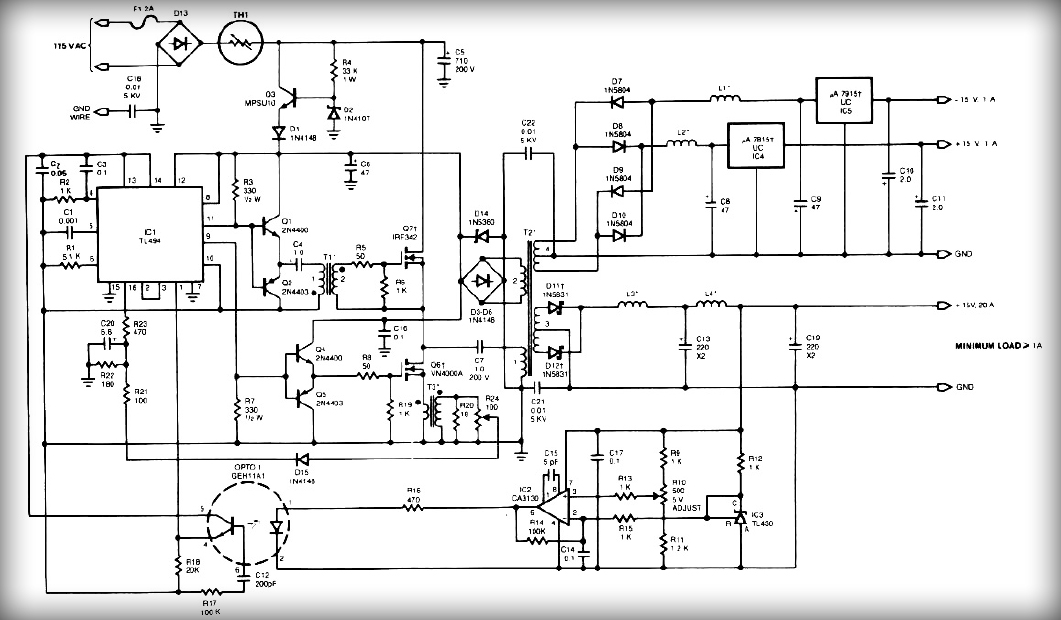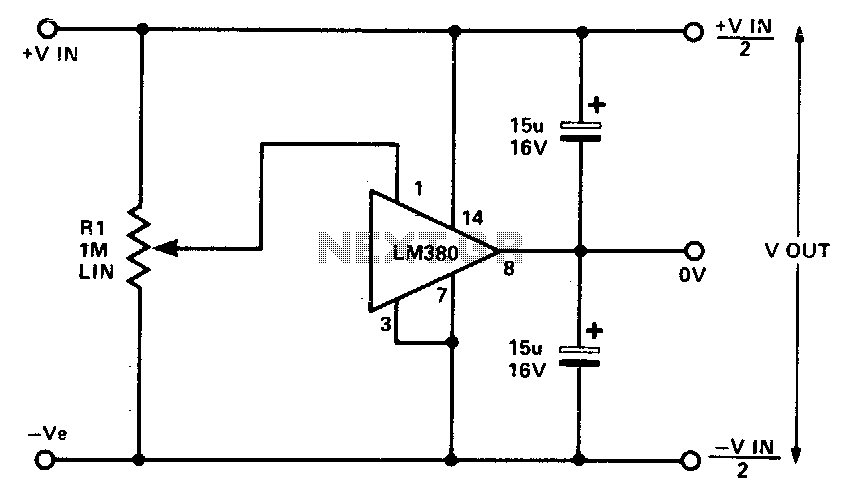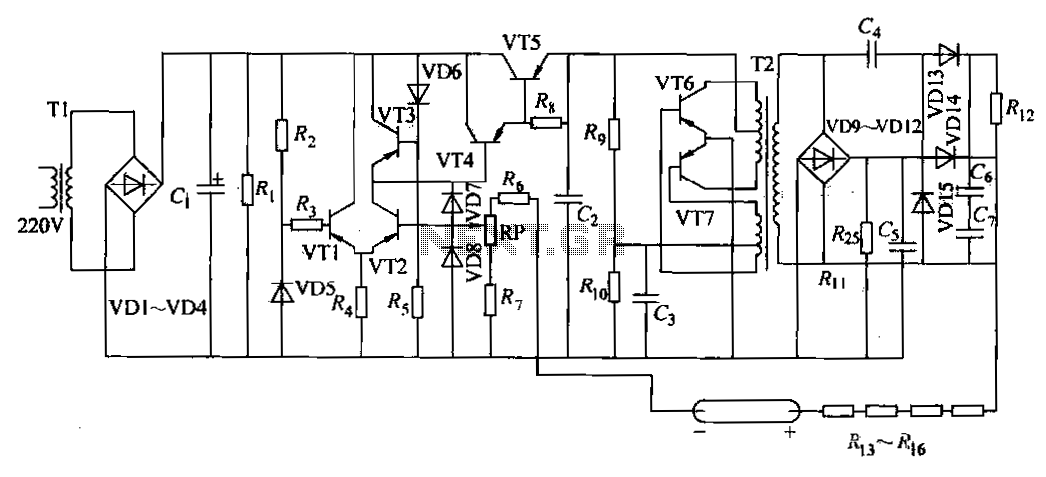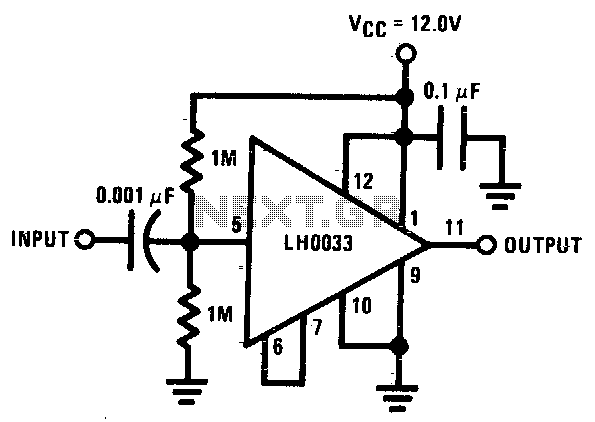
Bias Supply For Microwave Preamps
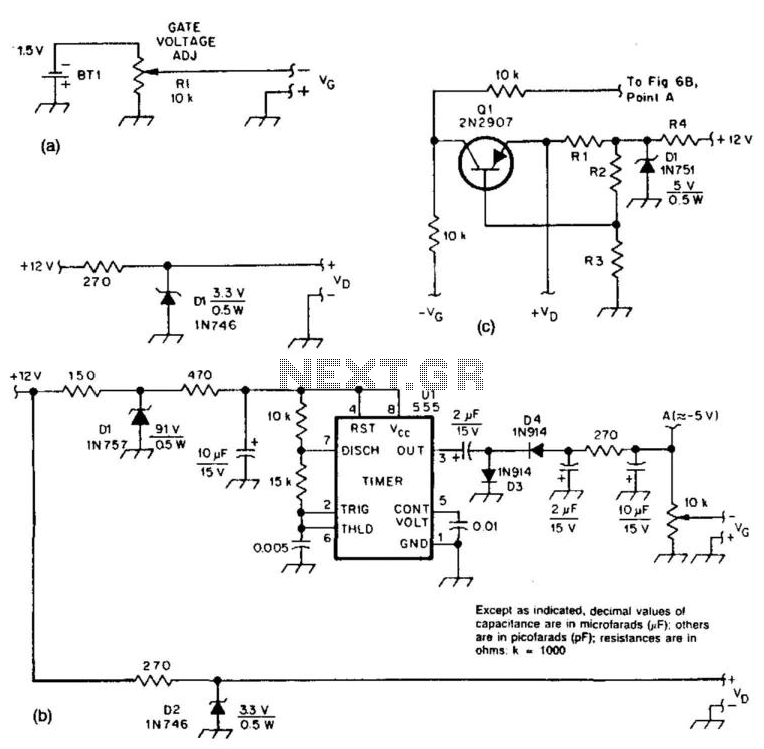
These two circuits provide bias for the microwave preamplifiers discussed in this text. The circuit in Figure 51-5(a) is a simple passive power supply. Figures 51-5(b) and 51-5(c) represent active power supplies, with Ul generating a negative supply and Ql controlling the drain voltage and current, independent of the characteristics of the GASFET.
The circuits described are essential for ensuring proper biasing of microwave preamplifiers, which are crucial in high-frequency applications. The passive supply in Figure 51-5(a) typically consists of resistors and capacitors that provide a stable voltage to the preamp. This method is straightforward and cost-effective, but it may not offer the precision required in high-performance applications.
In contrast, the active supplies illustrated in Figures 51-5(b) and 51-5(c) employ more complex circuitry to achieve better regulation of the supply voltages. The component Ul is responsible for generating a negative voltage supply, which is often necessary for the operation of certain types of microwave preamps that require a negative bias. The use of an active component allows for improved voltage stability over varying load conditions compared to a passive supply.
Moreover, the transistor Ql plays a crucial role in these active circuits by controlling the drain voltage and current. This configuration allows the circuit to maintain consistent performance regardless of variations in the GASFET characteristics, such as threshold voltage and transconductance. By isolating the biasing conditions from the GASFET's inherent properties, the design enhances the overall reliability and performance of the microwave preamplifier.
In summary, the combination of passive and active biasing circuits provides flexibility in designing microwave preamp systems, allowing engineers to select the most appropriate method based on performance requirements and application constraints. These two circuits provide bias for the microwave preamps shown in this text. The circuit in Fig. 51-5(a) is a simple passive supply. Figures 51-5(b) and 51-5(c) are active supplies, with Ul generating a negative supply and Ql setting the drain voltage and current, independent of GASFET characteristics.
The circuits described are essential for ensuring proper biasing of microwave preamplifiers, which are crucial in high-frequency applications. The passive supply in Figure 51-5(a) typically consists of resistors and capacitors that provide a stable voltage to the preamp. This method is straightforward and cost-effective, but it may not offer the precision required in high-performance applications.
In contrast, the active supplies illustrated in Figures 51-5(b) and 51-5(c) employ more complex circuitry to achieve better regulation of the supply voltages. The component Ul is responsible for generating a negative voltage supply, which is often necessary for the operation of certain types of microwave preamps that require a negative bias. The use of an active component allows for improved voltage stability over varying load conditions compared to a passive supply.
Moreover, the transistor Ql plays a crucial role in these active circuits by controlling the drain voltage and current. This configuration allows the circuit to maintain consistent performance regardless of variations in the GASFET characteristics, such as threshold voltage and transconductance. By isolating the biasing conditions from the GASFET's inherent properties, the design enhances the overall reliability and performance of the microwave preamplifier.
In summary, the combination of passive and active biasing circuits provides flexibility in designing microwave preamp systems, allowing engineers to select the most appropriate method based on performance requirements and application constraints. These two circuits provide bias for the microwave preamps shown in this text. The circuit in Fig. 51-5(a) is a simple passive supply. Figures 51-5(b) and 51-5(c) are active supplies, with Ul generating a negative supply and Ql setting the drain voltage and current, independent of GASFET characteristics.

